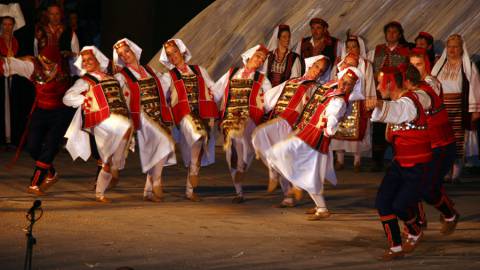Unlike Dinara, the Svilaja mountain is a green mountain that attracts a large number of hikers and climbers who enjoy beautiful landscapes and rural settlements, former shepherds' huts extending up to an altitude of 800 m...
What to see
The Dinara mountain belongs to the high karst area and is mainly composed of two types of sedimentary rock, limestone and dolomite. One of its peaks, Sinjal (1,831 m), is the highest point in Croatia. Extensive grasslands and herbaceous vegetation...
A reservoir on the River Cetina, 29 km2 in area, 20 km long and 64 m deep, it holds 541 million m3 of water. The building of a 56m-high dam near the Donji Bitelić village created the reservoir, to serve the needs of the Peruča hydroelectric power station...
Its 105km-long journey to the sea the River Cetina starts at the foot of the Dinara mountain, supplying several sources with water at an altitude of 380 m, of which the most abundant are the Glavaš spring, Vukovića spring and Batića spring...
Milan Begović was born in Vrlika on 19 January 1876, the son of a merchant and smallholder Ivan Begović and Filomena born Bressan. In 1882 he enrolled at the local school and continued his education in Split, then in Hamburg, Vienna...
Fr. Filip Grabovac was born at Podosoje near Vrlika in 1697, ten years after his father Mate Grabovac had moved to the Vrlika region from Međar (Kotar). A preacher, teacher, poet, prose writer, benefactor, as a chaplain he provided pastoral care...
The old Church of Our Lady of the Rosary was described in 1709 by Split Archbishop Stjepan Cupilli in his visitations. In 1753 it was replaced by a new church that gradually fell into ruin. The today's Church of Our Lady of the Rosary was built...
A stone bridge over the River Cetina is made from mediaeval megaliths, which were originally used as tombstones. A unique example of spanning the river, it is located near numerous archaeological sites, the most important of which is...
The Balečki bridge was built in 1907. The construction project was undertaken by the Austrian administration, and it was built by home master builders using dark grey polished stone. The bridge has three equally-sized semicircular openings...
The Church of Holy Salvation is one of the most important pre-Romanesque buildings in Croatia, and it also figures high in terms of European pre-Romanesque architecture. According to the preserved inscription, it was built by Cetina County Prefect...
The Česma fountain is located in a 19th century picturesque park with the same name, where one of the many tributaries of the River Cetina rises. Stone steps lead to the spring, which can be reached from three directions, and the water flows...
The Prozor fortress was built at the turn of the 14th and 15th centuries on the territory of Cetina Prince Ivan Nelipić. It was first mentioned in 1406, when Vrlika and its environs were ruled by Bosnian nobleman and Split Prince Hrvoje...





